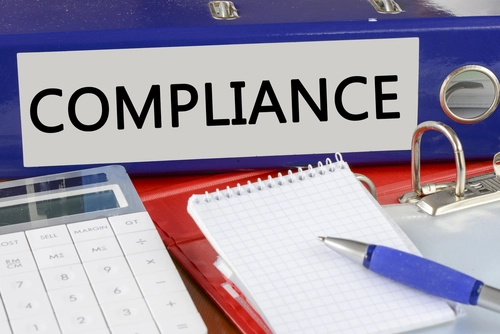Stick to 4 Tips for Compliance Bliss

Watch the timing of chart signatures, CMS advises.
Navigating the compliance rules has never been easy for busy Part B practices, but there are some situations that require you to know the regulations like the back of your hand. We’ve gathered the four most common compliance questions submitted to the Insider and researched the answers. Read on to determine whether you’re up to speed on the compliance rules and regulations.
Don’t Think You’re Immune to Whistleblowers
Question 1: What are the most common ways that whistleblowers turn in their employers? We don’t think anyone who works for us would ever blow the whistle on our practice, but we want to be sure.
Answer: There aren’t many published commonalities between whistleblowers, other than the fact that they encounter someone who they think is breaking the law, and they report it to the government or other entity. Unfortunately, their employers probably didn’t think they would ever blow the whistle either, but many whistleblowers have collected millions of dollars in their portion of settlement money after a successful Qui Tam lawsuit.
Not only do some employees think a Qui Tam whistleblower suit is going to be their payday, but many have felt ignored after reporting fraud within their practices, and feel that they have nowhere else to turn. If your employees come to you and say, “We aren’t doing this properly—this is not the legal way,” listen to them—they have probably researched the issue extensively before approaching you.
Most whistleblowers say they’ve been telling their bosses over and over again about what they’re doing wrong but the executives don’t listen. Then the whistleblower feels like the inability to change is putting them personally at risk, and they’re concerned. If your employee complains and after investigating, you find that they’re wrong, then go back and talk to them about why they might have a misconception, but don’t ignore their concerns.
Compliance Plan Alone Won’t Protect You
Question 2: Our practice bought a compliance plan from a consultant about eight years ago and we have not had a problem since then. Other than updating the names on it when a new physician joins our practice, this plan should cover us if we ever get audited, right?
Answer: When you say you “bought” the compliance plan, it is assumed that you purchased a pre-written plan and simply filled in your practice’s information on the front page, which probably is not enough to protect you if an audit ever occurred. Compliance is a multistep process that does not stop after you file away your compliance plan.
A pre-written compliance plan may be a good place to start, but it provides a false sense of security for several reasons, unfortunately. First and foremost, a compliance plan needs to be directed at the various regulatory, payment, operational, and legal issues that are most implicated for your specific practice.
CMS policy states that each practice or organization should look carefully at areas of exposure to make sure that it has adequate systems in place to monitor and correct sources for potential claims and penalties. If you simply buy a compliance plan off the shelf, it is less likely to be integrated into the operations of the practice. Instead, create a customized compliance plan after determining your biggest risk areas, and include details that are tailored to the issues you face.
Identify Conflicts of Interest
Question 3: One of our doctors was failing to sign his charts. Our compliance officer pointed it out to him after our records were requested by a MAC auditor, and the physician went back and signed all of the charts—some of them over a year old—as if he’d signed them on the date of service. Is this okay to do?
Answer: In most cases, no. The billing or ordering physician should not add late signatures to the medical record — beyond the short delay that occurs during the transcription process, CMS says. Instead, he could make use of the attestation process if necessary.
“If the practitioner’s signature is missing from the medical record, submit an attestation statement from the author of the medical record,” the agency advises. “Your contractor may offer specific guidance regarding addenda to medical records.” In addition, many of the Part B payers share sample attestation statements on their websites.
The instructions for signature attestation statement mechanism include, the following, from MLN Matters article MM6698:
Show Employees Where to Report Compliance Issues
Question 4: Our compliance plan does not identify who we should contact if we see compliance violations, but I assume we’d report that to our compliance officer. However, in my case, it’s the compliance officer who appears to be causing the violations. In this case, who do I contact?
Answer: Every compliance plan should include information on handling complaints from different sources within and outside the practice. In larger organizations, there will be some protective mechanisms to make sure that the employee can report a concern anonymously, and there are laws that protect against retaliation for the reporting of compliance concerns.
In addition, a compliance plan should have an option for reporting a concern to another party if the reporting individual is concerned that the compliance officer is implicated in the matter, or if the reporting individual fears some form of retaliation. This scenario suggests that there could be an ethical violation at issue, and a compliance plan should be prepared to address issues of professional ethics as well as any code of conduct or code of ethics adopted by the practice.




